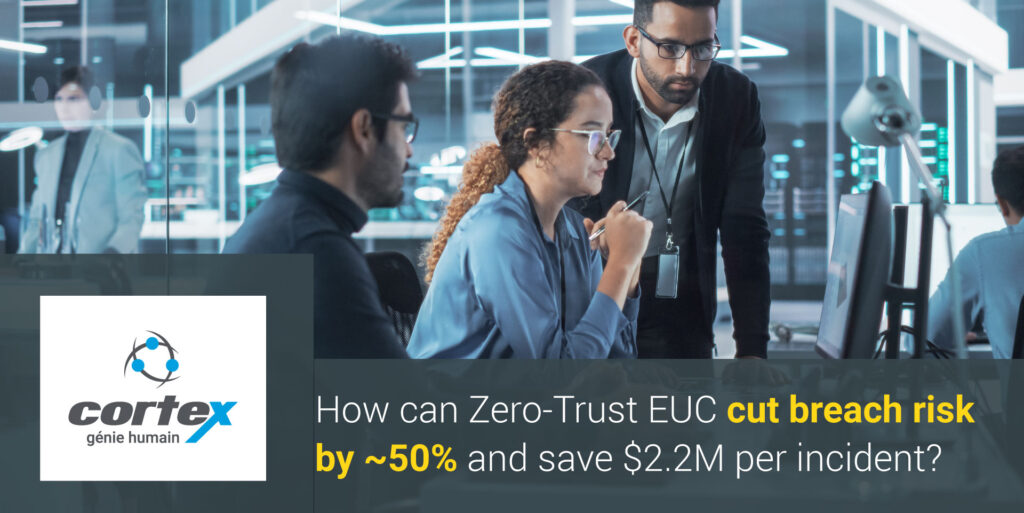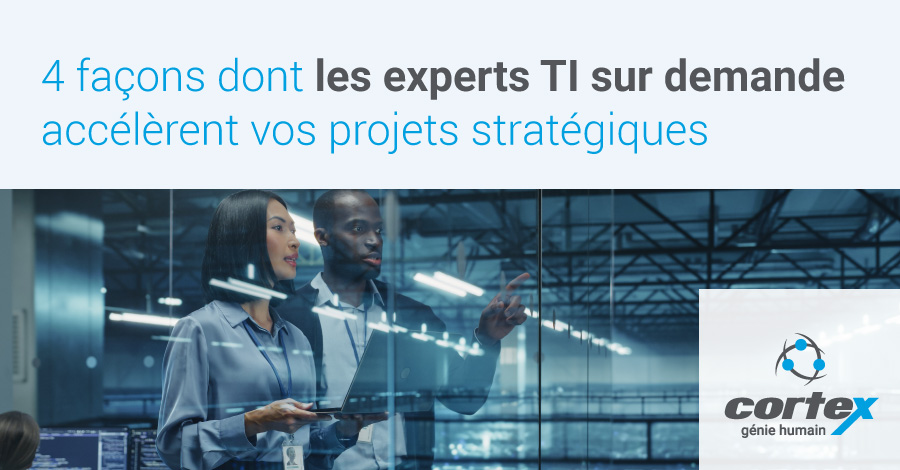The fastest way to shrink successful attacks ~50% is to apply Zero-Trust EUC where risk lives: endpoints, sessions, and SaaS. Enforce continuous authentication, micro-segment access, and observe behavior with AI-assisted SecOps. In 2025, the global average security breach costs $4.4M; cutting success probability by half protects ~$2.2M in expected value per incident avoided. Pair with phishing-resistant MFA to blunt credential abuse and help-desk impersonation, a common initial access path (see the IBM Cost of a Data Breach report, NIST SP 800-63B, and CISA's StopRansomware Guide).
Outline
- What is the real risk surface in hybrid EUC today? Endpoints and SaaS sessions are door #1 for ransomware and credential abuse; target where people actually work (see Darktrace's mid-year review).
- How do NIST 800-207 principles map to EUC? Continuously verify users/devices, segment access paths, and monitor sessions—make trust dynamic, not default (reference NIST SP 800-207).
- Why is phishing-resistant MFA non-negotiable? It stops push-fatigue, OTP replay, and help-desk swap attacks; use FIDO/WebAuthn (see NIST SP 800-63B and CISA's guidance).
- What stack delivers Zero-Trust EUC quickly? Brokered workspaces (eg, Citrix/AWS WorkSpaces), your IdP/IAM as policy brain, and analytics to automate response.
- What's the ROI math behind the $2.2M claim? Expected value: $4.4M × 50% = ~$2.2M protected per breach avoided (per IBM).
- What’s a 30-day “Zero-Trust Ready” POC? Two sprints: assess posture and pilot with a cohort; instrument latency, login, and risk deltas.
- Which metrics prove it worked? Fewer incidents, faster MTTR, fewer sessions at risk, compliant MFA changes, and segmented data paths.
Why endpoints are door #1
Threats move fast. Hybrid teamwork. Data lives in SaaS. That mix invites lateral movement via compromised identities and unmanaged devices. Target the EUC layer and you shrink blast radius before attackers ever touch core systems (see Darktrace).
Three NIST 800-207 pillars, applied to EUC
- Continuous auth + MFA. Verify each session using user, device, and posture context. Prefer phishing-resistant MFA (FIDO/WebAuthn). Trust becomes dynamic, not default (see SP 800-207 and SP 800-63B).
- Micro-segmentation. Isolate VDI pools, apps, and data paths. Even if a device or token is compromised, movement is contained (reference SP 800-207).
- Behavior analytics. Stream endpoint + session telemetry to spot risky patterns and auto-remediate—aligned with CISA's visibility/analytics pillar (CISA: Visibility & Analytics).
A pragmatic stack that works now
Use your existing IdP/IAM as the policy engine.
- Workspace brokerage: Citrix for app/desktop delivery; AWS WorkSpaces for managed, elastic desktops.
- Device posture: EDR/MDM to feed health into policy.
- Session analytics: EUC experience tools + SIEM/SOAR to trigger remediation. Outcome: fine-grained, session-level control where people actually work.
ROI math, made simple
Start with expected value: average security breach cost × probability of success. IBM's 2025 report pegs the global average at $4.4M. If Zero-Trust EUC halves success probability, you've protected ~$2.2M per incident avoided—often enough for a multi-year program to pay for itself. Add AI-assisted SecOps to identify and contain faster, and you compound savings (IBM).

30-day POC + “Zero-Trust Ready” diagnosis
Days 1–15: Posture assessment
- Map identities, devices, network paths, and SaaS usage.
- Baseline: login duration, session latency, image health, and risky events.
- Control alignment: NIST 800-207 and NIST 800-63B for authentication (see SP 800-207 and SP 800-63B).
Days 16–30: Pilot
- Roll to a defined cohort in non-prod, then a ringed prod slice.
- Enforce phishing-resistant MFA, per-app policies, and non-persistent images.
- Instrument risk reduction and MTTR; review FinOps/SecOps outputs; document runbooks (see CISA).
“What success looks like” checkpoints
- Lower incident rate (especially credential-based).
- Fewer escalations and page-outs; faster close.
- Compliant MFA changes with strict re-verification.
- Segmented data paths; fewer lateral-movement findings.
From policy to proof
Zero-Trust EUC turns principle into protection—and protection into profit. Return to the core: verify, segment, observe. Then measure, report, reinvest. The result is calm nights and stronger spend discipline.
FAQ
What should we automate first to cut tickets?
Start with password resets/unlocks, software install requests, MFA rebinds, Wi-Fi/VPN profile repairs, printer mapping, and disk cleanup/driver repair. Wire each to self-service “Fix it” tiles. Most orgs see immediate MTTR drops and a flatter queue.
Should everyone move to VDI/DaaS?
No. Use personas. Virtualize tasks and most knowledge workers; keep power users or hardware-bound roles on physicals or GPU-enabled pools. Migrate in rings to de-risk.
How do we prove ROI within 12 months?
Baseline tickets and cost per ticket ($22 in your model). Track % self-service, MTTR/FCR, incident counts, and device TCO. Compare the deltas against EUC program spending; include avoided incidents and longer refresh cycles.
Can we extend hardware refresh without hurting UX?
Yes—shift compute to the data center and run thin clients longer. Monitor login time, session latency, and app launch as guardrails. Replace peripherals as needed; keep images lean.
How does SSO/MFA reduce both tickets and risk?
One portal cuts login thrash; phishing-resistant MFA (FIDO/WebAuthn) stops help-desk impersonation resets. Add strict re-verification for MFA device changes and automate the flow.
What are the must-watch signals for proactive fixes?
Session latency, profile load time, disk health, policy drift, and app/driver crash loops. Alert, auto-remediate, and only open a ticket when automation fails.
Quotes & Links
- NIST SP 800-207 — Zero Trust Architecture (official). https://nvlpubs.nist.gov/nistpubs/SpecialPublications/NIST.SP.800-207.pdf
- NIST SP 800-63B — Digital Identity (authentication; phishing-resistant MFA). https://csrc.nist.gov/pubs/sp/800/63/b/upd2/final
- CISA — #StopRansomware Guide (2025 update; phishing-resistant MFA). https://www.cisa.gov/sites/default/files/2025-03/StopRansomware-Guide%20508.pdf
- IBM — Cost of a Data Breach 2025 (global average $4.4M; AI savings). https://www.ibm.com/reports/data-breach
- CSOonline — 86.5% have begun Zero Trust implementation (Cisco survey). https://www.csoonline.com/article/1249027/9-in-10-organizations-have-embraced-zero-trust-security-globally.html






